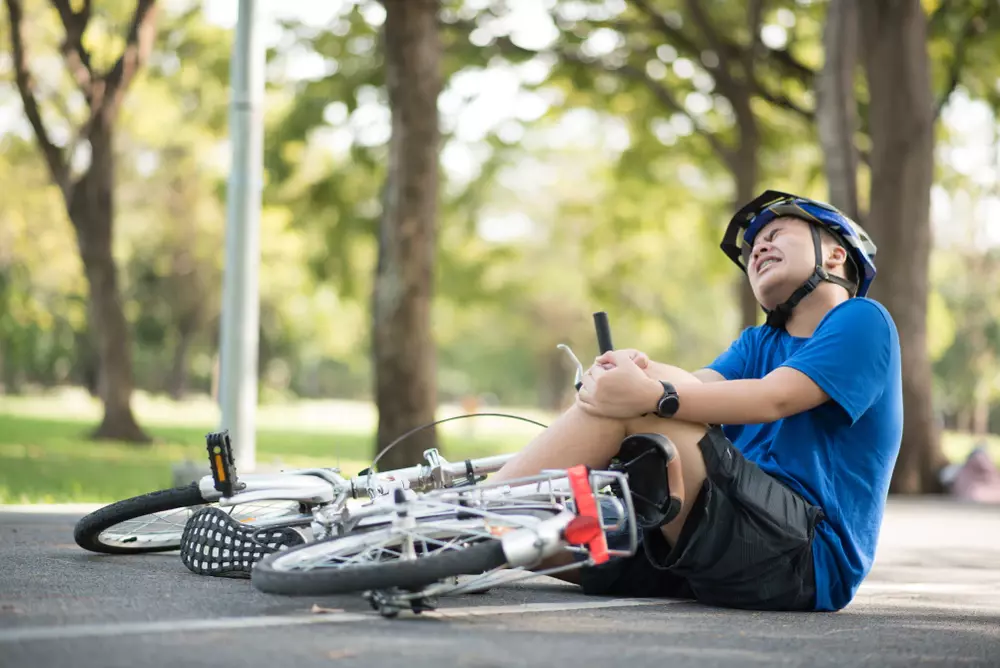
The medical experts at the Complete Care emergency room Austin locations are well-equipped and experienced in providing cycling road rash care. Austin is a bike-friendly city, and while bicycling is great for exercise and can give a rider a strong sense of community, accidents happen.
Cycling road rashes occur when a rider crashes their bike and scrapes their body on the road, often resulting in lost skin. Road rash, also called road burn, can be incredibly painful and even dangerous if not properly treated.
Cycling road rash care can begin at home with basic first-aid, but if you notice any signs of infection, visible muscle or bone, excessive bleeding, or foreign objects in the wound, head to a Complete Care emergency room immediately for treatment.
What is the best way to treat road rash?
The beginning stages of cycling road rash care consist of basic first-aid:
Step 1: Stop any bleeding and temporarily cover the affected area.
Step 2: Gently clean and scrub to remove any dirt or gravel. If the area is slightly red, use soap and water, but iodine, betadine, or normal saline can be effective for dirt removal as long as you are not allergic.
Step 3: Apply antibiotic ointment once the wound is clean. (Keep reading: What do you put on a cut?)
Step 4: Cover the cut with a bandaid or a non-stick gauze pad for a minimum of 24 hours.
Road burns or road rashes from cycling accidents are typically minor injuries, but there are some cases where medical attention could be necessary.
When should you go to the hospital for road rash?
Though road rash is one of the most common bicycle accident injuries, there are still situations in which you should seek medical treatment. If any of the following conditions apply when examining your road burn, head to the nearest emergency room for help:
- There are large, foreign objects in your skin (glass, rocks, large debris)
- There is visible muscle or bone
- The road burn covers a large area of the body
- There is excessive bleeding
- There are obvious skin infection symptoms on the wound
What does infected road rash look like?
Sliding along dirty road surfaces can result in grit and dirt being embedded in the wounds which can increase the likeliness of infection. Knowing how to tell if a wound is infected is key to cycling road rash care.
Here are common symptoms of a road rash infection:
- Redness of the skin
- Itching, burning, or painful sensations
- Pus or drainage
- Blisters
- Skin peeling or breakdown
- Dark or discolored skin
While most skin infections are non-life-threatening, they can quickly become more severe if left untreated. If you notice any of these skin infection symptoms, head to your nearest emergency room ASAP.
Road rash infection treatment
Road rash infection treatment depends on the type, severity, and location of the wound. Your doctor will most likely be able to identify the type of infection by appearance, but in some cases, skin cell sample testing may be done for an accurate diagnosis.
Once the doctor identifies the infection type, they will prescribe the treatment best suited to combat the infection. For example, antibiotics can be prescribed for bacterial infections, whereas medicated creams or sprays can treat fungal skin infections.
If your wound doesn’t improve after initial treatment, you should contact your doctor.
Find quality cycling road rash care at a Complete Care ER in Austin, Texas
Road burn is one of the most common summer injuries we see at Complete Care here in Austin — which is why we take cycling road rash care as seriously as we do. We ensure that our medical staff is ready to handle any bike accident injury treatment necessary so that you can get in, get out, and get back to cycling.
No matter what injury you are facing, your nearest Complete Care location is ready to help, 24 hours a day, 7 days a week. We will take complete care of you.
More Helpful Articles by Complete Care:
- The Difference Between Acute vs. Chronic Pain
- What Are The Signs of an Unhealthy Heart?
- How to Treat Smoke Inhalation Symptoms
- What Are Diabetic Seizure Symptoms?
- Does Rain Make You Sick?
